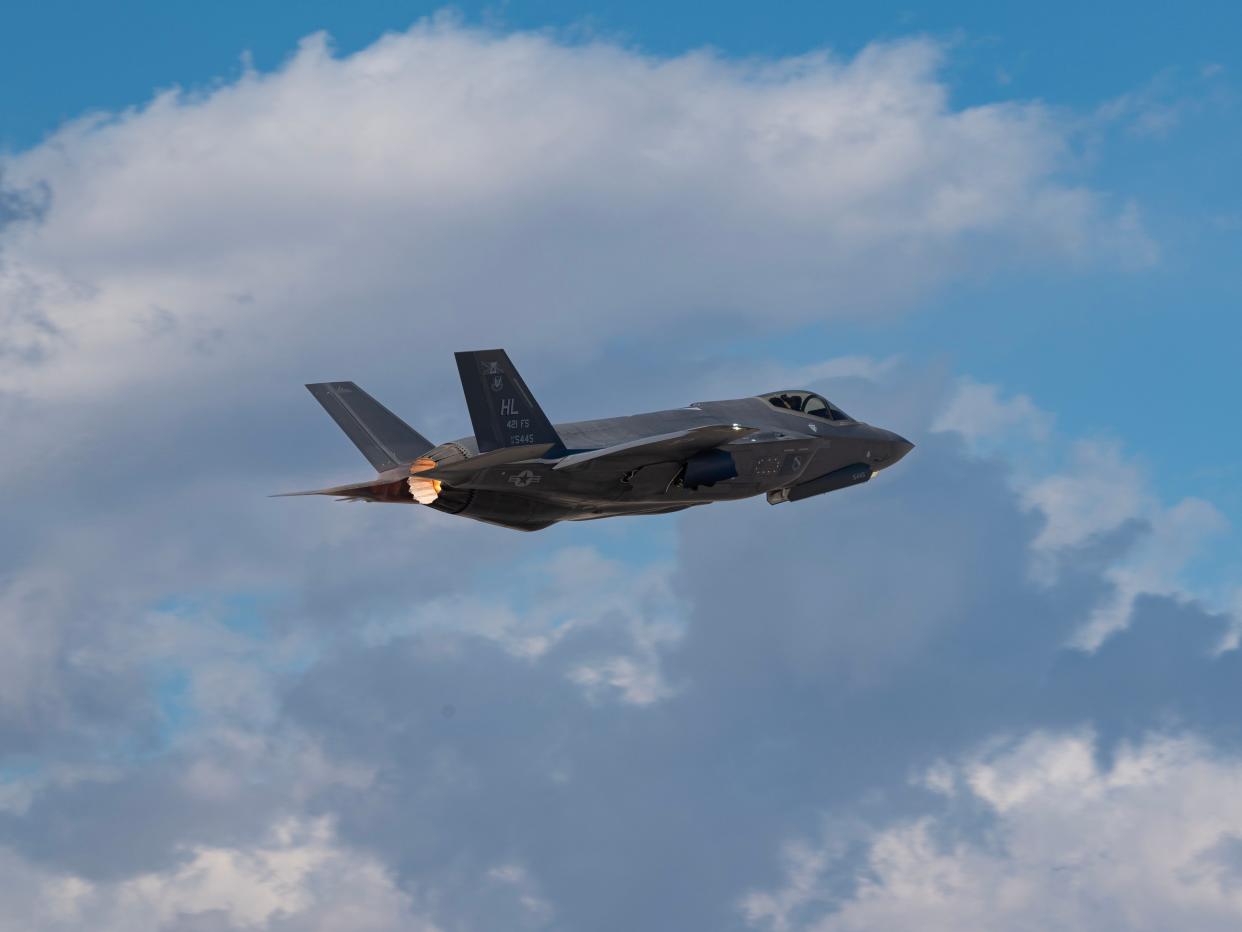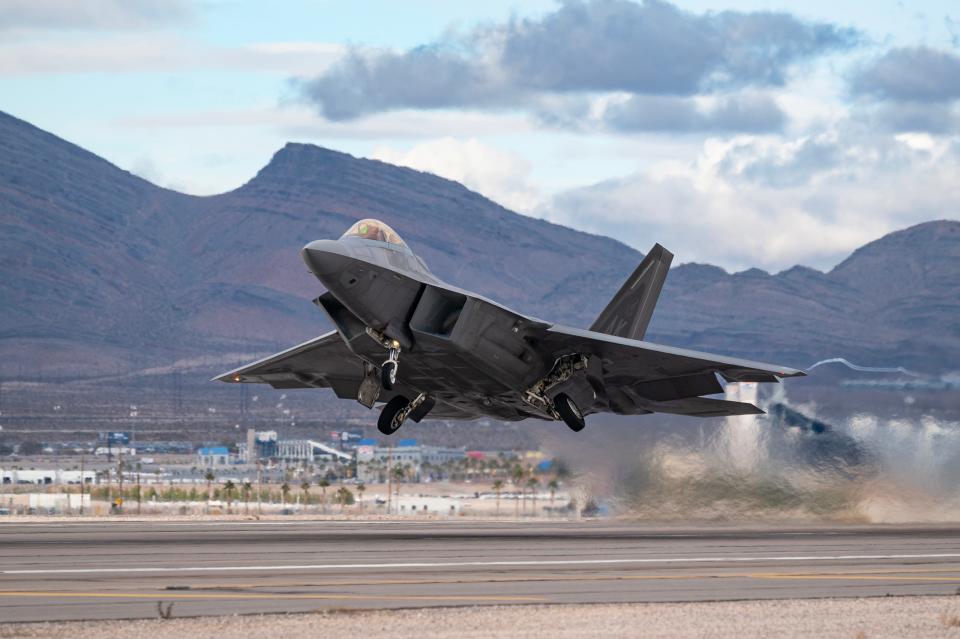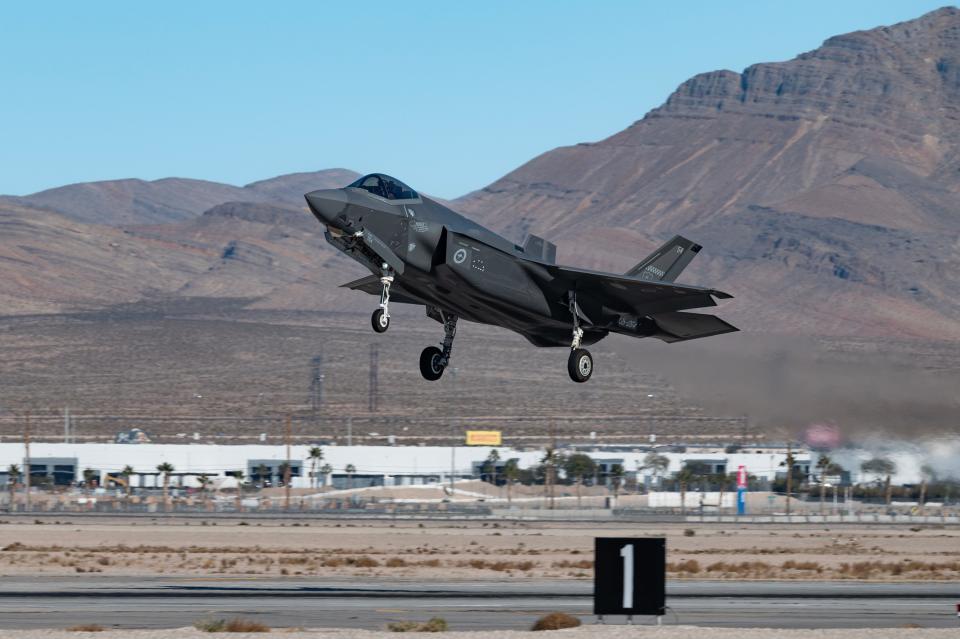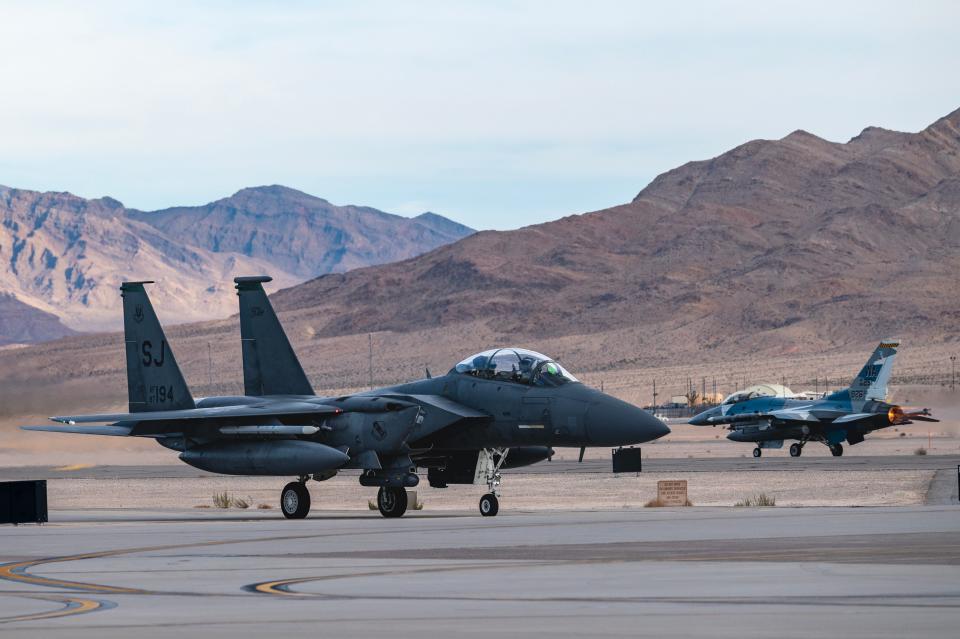US Air Force F-35s are training for threats even tougher than what jets in Ukraine are facing. Pilots say they're 'surviving' but 'not every day is a win.'

US Air Force fighter jets recently took part in the Red Flag air combat exercise.
The event saw aircraft fly in simulations of tough threat environments.
These scenarios are meant to prepare pilots for threats tougher even than what pilots are facing in Ukraine.
The US Air Force recently put its F-35 stealth fighters through an intense air combat exercise, which is aimed at preparing pilots to fight against threats tougher even than those in Ukraine, a challenging operating environment for anything flying.
Dubbed Red Flag 24-1, the exercise saw hundreds of pilots, maintainers, and support personnel head to Nellis Air Force Base in Nevada recently for an event that tests units' capabilities across different domains, the 388th Fighter Wing said in a statement earlier this week.
The exercise, which dates back to the 1970s and is typically held several times a year, consists of a friendly (blue) force that takes on an enemy (red) force in scenarios created by a third-party.
Participants plan solutions to defeat problems that the exercise planners create, and each scenario might see over 100 friendly and enemy participants flying and fighting in airspace that covers parts of Utah, Nevada, and California.
This year's event involved airmen from the 421st Fighter Squadron and 421st Fighter Generation Squadron, as well as over a dozen F-35A Lightning IIs from Utah's Hill Air Force Base. A typical Red Flag exercise includes a wide variety of aircraft with attack, bombing, electronic warfare, support, search and rescue, reconnaissance, and aerial refueling capabilities.

In many missions, the main job of the F-35 is to serve in an offensive counter-air role, meaning they protect stealth bombers or other fighters by engaging enemy aircraft, the 388th explained. Additionally, this could mean eliminating surface-to-air threats and clearing the way.
The 388th said that the Nevada Test and Training Range replicates surface threats that are "better than anywhere else in the world." It said target objectives are protected by radar and surface-to-air missile networks.
That makes for a difficult threat environment, one that the 388th noted "legacy aircraft cannot survive," but it is one the F-35 is suited for due to its stealth and technical capabilities.
During the exercise, aircraft belonging to the friendly and enemy teams are given similar weapons, but the adversaries also use electronic warfare and other technologies to appear as the enemy and provide better training, according to Defense One.
For adversary (red) air, an Air Force commander told the outlet that "our F-16 would tend to replicate a 4th-generation threat, and then our F-35s and F-22s will tend to replicate something that's more like a 5th-generation red threat, that could be a Russian or a Chinese aircraft."

The kind of threats the training aims to replicate for the pilots during Red Flag appear to be even tougher than those that have emerged during Russia's war against Ukraine, a conflict in which neither military has managed to achieve air superiority due to the formidable surface-to-air missile systems that each side possesses.
Legacy fourth-generation aircraft have struggled in that threat environment, where the danger is primarily surface-to-air threats.
Unlike in Red Flag, fifth-generation jets are absent from this fight. Russia has been unwilling to commit its Su-57 Felons to the war, likely concerned, in part, about the effectiveness of the jet's stealth technology, and Ukraine lacks the capability altogether.
By going up against challenging surface-to-air threats and fifth-generation aircraft during Red Flag, US and allied pilots appear to be training for next-level combat, perhaps the kind that they could face in a potential conflict down the road with a near-peer adversary.
Such a conflict could possibly include a fight with China, which Washington has called it's "pacing challenge," or Russia, which some worry could might one day go to war with NATO if it wins out in Ukraine.
The F-35 was built with future conflicts in mind, and "Red Flag is a valuable opportunity for us to integrate the F-35 with other platforms and allied nations and fight in very realistic, challenging scenarios against the most advanced threats they can replicate," said Lt. Col. Nathan Heguy, the 421st Fighter Squadron commander, in the 388th statement.

"So far, we have had success taking these threats out and surviving," Heguy said, pointing out that this is "notable when you combine them with the very robust air-to-air threats here."
"But, not every day is a win," he said. "Some days are harder than others, and if we're not struggling in training, we're not training hard enough."
The F-35 made by Lockheed Martin is America's newest fifth-generation jet — built for ground attacks and air-to-air combat, and it has already seen some combat experience in the Middle East. The F-35 program, however, has been beset with readiness and maintenance problems, although the aircraft appears to have flown without hiccups during Red Flag.
"The jets have been performing extremely well. We haven't lost a single sortie due to a maintenance issue," said Maj. Bryan Butler, 421st Fighter Generation Squadron commander. "That's a testament to our Airmen."
Read the original article on Business Insider

 Yahoo News
Yahoo News 
